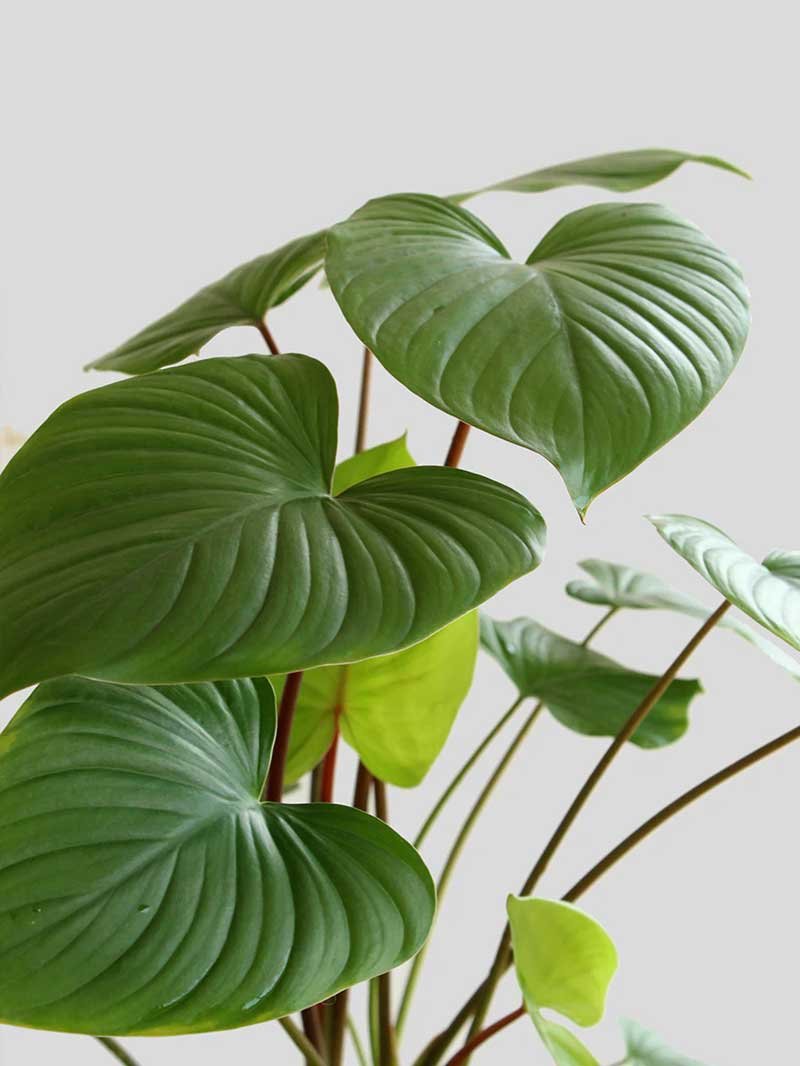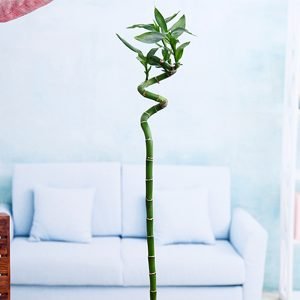No products in the cart.
All Plants, Foliage Plants, Indoor Plants, Living room plants, Office Plants, Plants by location, Plants for bathroom, Plants for bedroom, Room corner plants
Homalomena ‘Maggy’, Shield plant- Plant
Product Contains:
| Sr No. | Item name |
| 1 | Homalomema ‘Maggy’- Plant |
| 2 | Plastic Pot |
Availability:
900 in stock
₹378.00 ₹900.00
900 in stock
₹623.00 for 2 item(s)
Plant Description: Hamalomena
A genus of evergreen, perennial tropical plants, they’re known for their large, waxy and glossy foliage and relative ease of care. The slow-growing, sometimes aniseed-fragranced, leaves tend to be heart or arrowhead in shape. This is why they get their nicknames of the queen of hearts or the shield plant. Preferred by homeowners and interior landscapers alike due to their ease of care, disease resistance, and tolerance of low lighting conditions and stress. Some species also produce unique patterns on their leaves, adding to their visual appeal. These plants are highly adaptable and can thrive in both low light conditions and moderate indirect light, making them suitable for various indoor environments. They are relatively low-maintenance, making them an excellent choice for beginners and busy plant parents.
Light Requirements for Homalomena
Homalomena plants are versatile when it comes to light conditions. They can tolerate low light, but they prefer bright, indirect light for optimal growth and vibrant foliage. Avoid placing them in direct sunlight as it may scorch their leaves.
Ideal Temperature and Humidity
These tropical plants enjoy warm temperatures and high humidity. Aim to keep your plant in a room where the temperature stays between 65°F to 80°F (18°C to 27°C) and humidity levels are around 60% or higher.
Watering
Moderate watering is key to a thriving plant. Allow the top inch of the soil to dry out before watering, and ensure proper drainage to prevent waterlogging. During the growing season, water the plant more frequently, and reduce watering during winter when the plant’s growth slows down.
Soil Requirements
A well-draining, peat-based potting mix with added perlite or orchid bark works best for this. This type of soil retains enough moisture without becoming waterlogged, promoting healthy root growth.
Fertilizing Homalomena
During the active growing season, which typically spans from spring to summer, feed your plant with a balanced liquid fertilizer every two to four weeks. Avoid fertilizing during the dormant winter months.
Pruning Homalomena Plants
Regular pruning helps maintain the plant’s shape and encourages new growth. Trim away any dead or yellowing leaves to keep the plant looking vibrant.
Propagation Methods
These plants can be propagated through division or stem cuttings. Dividing the plant during repotting is a simple way to create new plants. Alternatively, you can take stem cuttings and root them in a well-draining medium to start new plants.
Frequently Asked Questions (FAQs)
- Q: How often should I water my Homalomena plant? A: Water your Homalomena when the top inch of the soil is dry to the touch, usually once a week during the active growing season.
- Q: Can I keep my Homalomena in a window with direct sunlight? A: While Homalomena plants can tolerate low light, they prefer bright, indirect light. Avoid direct sunlight to prevent leaf scorching.
- Q: How do I propagate my Homalomena? A: You can propagate Homalomena through division during repotting or by rooting stem cuttings in a well-draining medium.
- Q: Why are the leaves of my Homalomena turning yellow? A: Yellowing leaves may be a sign of overwatering or poor drainage. Ensure proper drainage and adjust your watering schedule accordingly.
- Q: Can I use tap water for watering my Homalomena? A: Homalomena plants are sensitive to chlorine and other chemicals in tap water. It’s best to use filtered or distilled water for watering.
- Q: Does the Homalomena require frequent fertilization? A: During the growing season, you can fertilize your Homalomena every two to four weeks with a balanced liquid fertilizer.
Disclaimer : The image is for reference purposes only. The actual product may vary in shape or appearance based on climate, age, height, etc.
Product Contains:
| Sr No. | Item name |
| 1 | Homalomema ‘Maggy’- Plant |
| 2 | Plastic Pot |
Based on 0 reviews
Be the first to review “Homalomena ‘Maggy’, Shield plant- Plant”
You must be logged in to post a review.












There are no reviews yet.